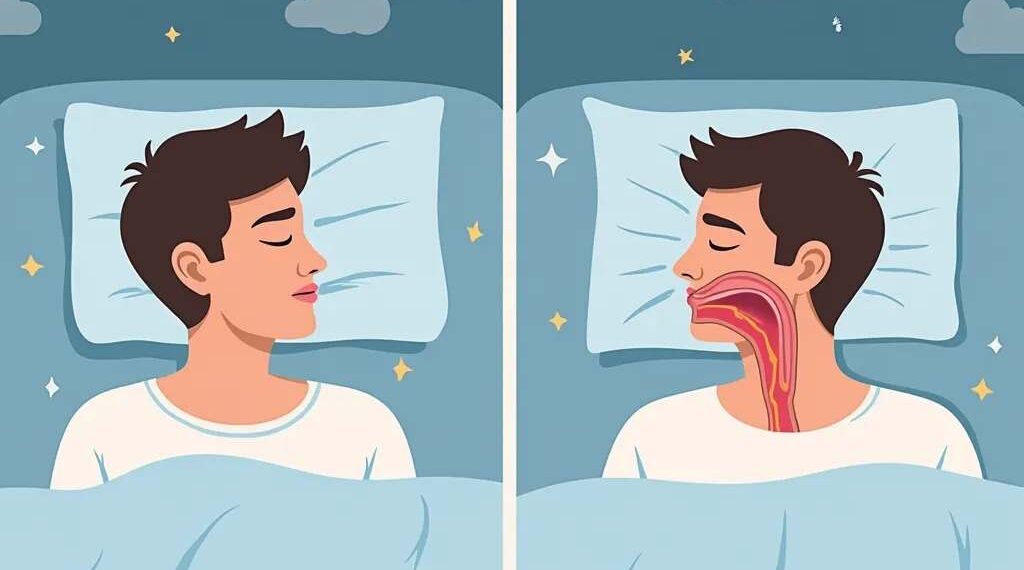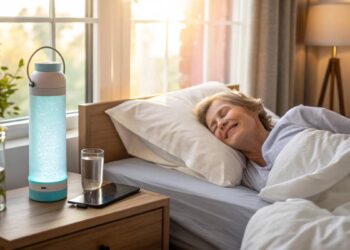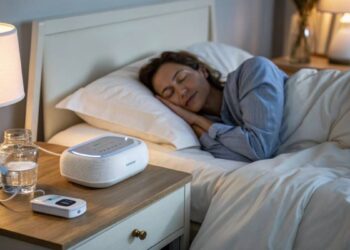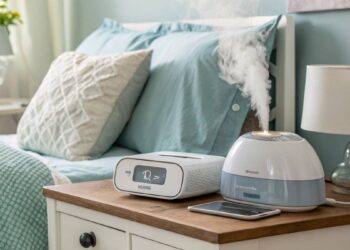Introduction
Are you constantly battling exhaustion despite getting a full night’s sleep? You’re not alone. Every night, millions of Americans unknowingly wage war against sleep apnea, a sneaky sleep disorder that does more than just interrupt your peaceful slumber. Think of your airway as a garden hose – when it gets kinked, the water flow stops. Similarly, sleep apnea repeatedly “kinks” your breathing during sleep, turning what should be restorative rest into a nightly struggle. Whether you’re concerned about your own sleep quality or worried about a loved one’s persistent snoring, understanding sleep apnea could be your first step toward reclaiming those peaceful nights you deserve.
Understanding Sleep Apnea
Sleep apnea is a pesky sleep disorder crashing the dreams of many folks, especially those who might be a tad overweight, past the big 4-0, or have certain lifestyle habits. Let’s get into what exactly sleep apnea is and how it can mess with your health.
What is Sleep Apnea?
Ever heard of sleep apnea? It’s this thing where your breathing hits the pause button while you’re catching some Z’s. These breaks, called apneas, can drag on from seconds to minutes and pop up over and over during the night. There’s a type called obstructive sleep apnea (OSA), which is the main troublemaker. Basically, your throat muscles chill out too much as you snooze, causing a clogged airway.
Some brainiacs dug in and found around 22 million Americans are battling sleep apnea, but a bunch don’t even know it. Spotting the clues is key to getting a proper diagnosis and fixing things up. Check out these common symptoms:
| Symptoms | Description |
|---|---|
| Loud snoring | Might test the patience of your partner |
| Gasping or choking during sleep | Signs that your airway’s on strike |
| Morning headaches | Comes from low oxygen during sleep |
| Daytime fatigue | Thanks to nap time interruptions |
| Difficulty concentrating | Puts a damper on your daily groove |
Curious to dive deeper? Explore sleep apnea symptoms for more scoop on the signs.
Impact of Sleep Apnea on Health
Skipping treatment for sleep apnea isn’t just about feeling sleepy. It can lead to a whole pile of health challenges. Here’s what you might be looking at:
| Health Impact | Description |
|---|---|
| Heart and vessel issues | More jitters about high blood pressure, ticker problems, and strokes |
| Metabolic mishaps | Better odds of wrestling with diabetes or metabolic syndrome |
| Quality of life | Bad sleep invites mood swings and tanks overall vibes |
| Brain fog | Heightened chance of forgetting stuff and brain weariness |
Fellas dealing with sleep apnea often have a tough time keeping their weight in check. There’s a vicious cycle here: weight can make sleep apnea worse, so losing some pounds might relieve some symptoms. Get the scoop on whether shedding those extra pounds helps by checking out does weight loss help sleep apnea.
Tackling sleep apnea is crucial for staying in tip-top shape. For those worried about the why behind it, there are plenty of sources to check out, including what causes sleep apnea and comparing central vs obstructive sleep apnea.
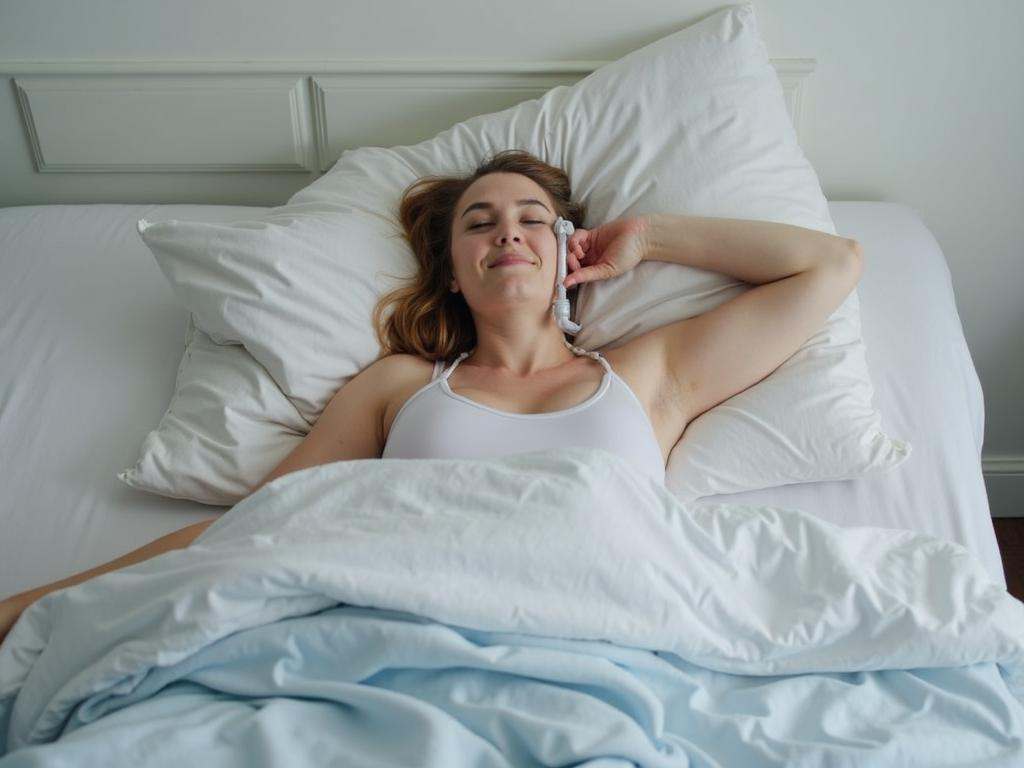
The Link Between Weight Loss and Sleep Apnea
Figuring out how shedding those extra pounds can help with sleep apnea might just be a game-changer for folks dealing with this issue. Turns out, dropping a few pounds can really make a difference in managing sleep apnea.
Does Weight Loss Help in Managing Sleep Apnea?
Loads of research backs up the idea that losing weight can ease the symptoms of sleep apnea. Drop just 10% of your body weight, and you’ll likely see fewer sleep interruptions. Imagine waking up feeling more rested and healthy!
| Weight Loss (%) | Reduction in AHI (Apnea-Hypopnea Index) |
|---|---|
| 5% | 20% |
| 10% | 40% |
| 15% | 60% |
| 20% | 80% |
The AHI measures how often you stop breathing or breathe shallowly each hour you snooze. A lower AHI means better sleep and cuts down risks of issues tied to apnea, like heart troubles. Wanna dive deeper? Check out our page on sleep apnea symptoms.
Mechanisms Behind Weight Loss and Improved Sleep Apnea
There’s a few ways losing weight helps with sleep apnea. First up, extra weight tends to pile up fat around the neck and throat, blocking the airway. But lose those pounds and, voilà, you can breathe easier!
Check out these other benefits:
- Less Inflammation: Trimming down can cool off inflammation in your body, which ramps up sleep apnea troubles.
- Better Breathing: Life gets easier for your lungs when there’s less weight to lug around, meaning you breathe smoother as you sleep.
- Balanced Hormones: Shed some weight, and your sleep and appetite hormones might just fall back into a healthy groove, helping you catch better Z’s.
- Reduced Snoring: Often, trimming down cuts back on snoring, sweetening the sleep experience.
Curious about what’s behind sleep apnea? Swing by our article on what causes sleep apnea. Knowing how all this fits together can be a big help in tackling sleep apnea, bringing better health and peace of mind.
Risk Factors for Sleep Apnea
Sleep apnea isn’t just about snoring—many things can put someone in the danger zone. Get the scoop on these factors and manage them to keep the peace in dreamland.
Overweight/Obesity
Let’s face it, carrying extra pounds isn’t just hard on your jeans. It can be a major culprit behind sleep apnea. Packing on weight can slap fatty deposits around your throat, narrowing the airway like a clogged sink. Dropping some pounds can clear the way, both for your breathing and your dreamscapes.
| BMI Category | Risk Level for Sleep Apnea |
|---|---|
| Underweight (< 18.5) | Low |
| Normal weight (18.5 – 24.9) | Low |
| Overweight (25 – 29.9) | Moderate |
| Obese (30+) | High |
People tipping the scales with a BMI over 30 are playing a risky game. Keeping weight in check is like an insurance policy against sleep apnea. Curious how shedding pounds can help? Dive deeper here.
Age-related Sleep Issues
Aging has its perks, but it also tosses sleep apnea into the mix. With each birthday, throat muscles tend to sag, sometimes blocking airflow during cherished REM cycles. Hit the big 4-0, and you’ll see why shuteye gets trickier.
| Age Group | Increased Risk for Sleep Apnea |
|---|---|
| 30-39 | Moderate |
| 40-49 | High |
| 50-59 | Higher |
| 60+ | Very High |
The older we get, the more likely sleep apnea crashes our party if left unchecked. Regular check-ins with your doc keep you snoring sweetly. For more on the riddle of sleep apnea, check out more info here.
Partner of Heavy Snorers
Sharing covers with a heavy snorer? You might be getting more than you bargained for—like disturbed sleep patterns snagging a hold of your restful nights! Noise isn’t just annoying—it pushes you right into the apnea danger zone.
Acknowledging the toll snoring takes on your beauty sleep can motivate folks to look for solutions. Explore noise-busting tips and tricks here.
DOT Certification Concerns for Commercial Drivers
Commercial drivers have to jump through hoops for health checks, and sleep apnea throws a wrench into the works. For these road warriors, untreated sleep apnea isn’t just a droopy-eyes problem; it’s a hazard for the open road.
Those showing anything remotely close to sleep apnea symptoms might find themselves parked unless treated. Keeping track of this condition protects both the highways and the prized DOT certification.
Having a grip on sleep apnea risk factors means knowing if it’s knocking on your door. Taking charge of the situation, like linking up with a healthcare expert, can lead to better health and rejuvenated dreams. For personalized help, don’t skip that doctor visit!
Strategies for Weight Loss
Folks wrestling with sleep apnea often find that shedding some pounds can really turn things around. So, let’s chat about how to eat better, move more, and maybe tweak a few habits to help manage that waistline.
Healthy Diet for Weight Loss
Eating well is the backbone of losing weight. Think about loading up on goodies like fruits, veggies, lean meats, and whole grains. That way, you keep those pesky calories in check but still pack in essential stuff your body needs.
Sample Daily Meal Plan
| Meal | Foods | Approximate Calories |
|---|---|---|
| Breakfast | Oatmeal with berries | 300 |
| Snack | Greek yogurt | 150 |
| Lunch | Grilled chicken salad | 400 |
| Snack | Carrot sticks with hummus | 150 |
| Dinner | Baked salmon with quinoa and broccoli | 500 |
| Total | – | 1,450 |
By gobbling up smaller portions and munching on fiber-rich foods, you’re likely to feel fuller for longer and not overeat. Curious about how sleep apnea starts? Stuff like healthy munching can ease some of the triggers.
Importance of Regular Physical Activity
Breaking a sweat regularly is a major player in the weight-reduction game. Exercise torches calories and tones up muscles, helping you keep that weight down. Aim for at least 150 minutes weekly with activities that get your heart rate up.
Recommended Exercises
| Type of Exercise | Frequency | Duration |
|---|---|---|
| Walking | 5 days a week | 30 minutes |
| Strength Training | 2 days a week | 20-30 minutes |
| Yoga or Stretching | 2-3 days a week | 30 minutes |
Walking, swimming, cycling—they’re all great for boosting fitness. Toss in some moves to help flexibility and strength for even better health, which might ease sleep apnea symptoms. Want alternatives to CPAP? Take a gander at other solutions.
Behavioral Changes for Sustainable Weight Loss
Keeping the weight off is the name of the game. Mindful munching can help you realize when you’re actually hungry instead of eating outta boredom or stress. Jotting down what you eat might show habits that lead to too much munching.
Tips for Behavioral Changes
| Change | Suggested Action |
|---|---|
| Mindful Eating | Eat slowly without distractions, like your phone or TV |
| Goal Setting | Craft realistic, bite-sized goals for weight loss |
| Support System | Gather a squad of friends, family, or groups for support |
Building a cheer squad around you boosts motivation and holding you to your slimming goals. Also, digging into any emotional eating triggers could help with both your weight and sleep issues.
Wrapping your mind around these strategies: eating smart, moving more, and shifting behaviors—can seriously up your game in handling weight and better managing sleep apnea. Need more insights? Check out resources like sleep apnea symptoms or pediatric sleep concerns for extra help.
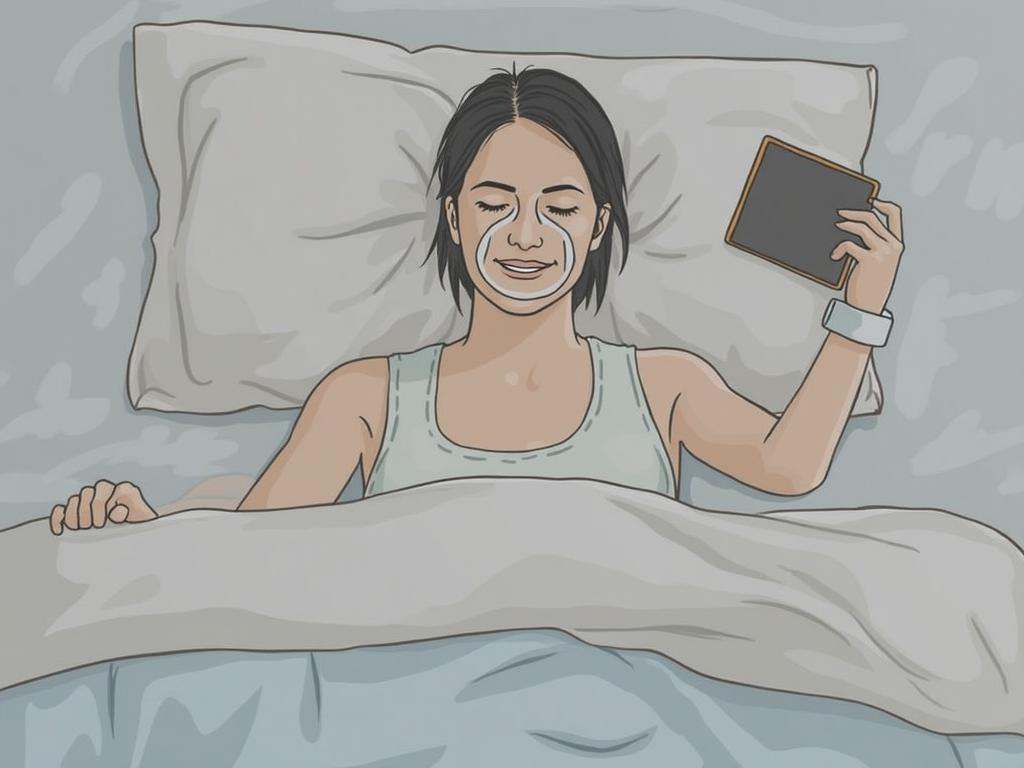
Sleep Apnea Treatments
Tackling sleep apnea takes more than just hitting the hay. It’s all about options that fit each person’s quirks. You’ve got your trusty CPAP machines, oral gizmos, and sometimes even a bit of snip-snip for more stubborn cases.
Continuous Positive Airway Pressure (CPAP) Therapy
CPAP: It’s kind of the big shot in the sleep apnea world. This gadget pumps air through a mask, so your night doesn’t turn into a pause-fest. No more gasping breaks!
Here’s the scoop on CPAP:
| Feature | Description |
|---|---|
| Effectiveness | Slashes those apneas by a hefty 80-90% for most folks |
| User Comfort | Getting used to it may be a pickle, but it gets easier over time |
| Maintenance | Needs a good rinse and scrub regularly; check out how to clean CPAP machine for tips |
| Suitability | Best for those hitting heavy on the apnea scale |
But if CPAP’s not your cup of tea, there’s always alternatives to CPAP worth checking out.
Oral Appliances for Sleep Apnea Management
Oral gadgets! These nifty devices, which a dentist shapes to fit your mouth, help by nudging your jaw to keep things open while you snooze. They’re a solid pick for those with mild stuff or if a CPAP mask is not your jam.
Here’s what makes oral appliances appealing:
| Benefit | Description |
|---|---|
| Convenience | Light and easy to lug around compared to their CPAP cousins |
| Comfort | No bulky masks; some folks say it’s like putting in a retainer |
| Effectiveness | Packs a punch for the right crowd |
Got a soft spot for the do-it-yourself route? Maybe give mouth exercises for sleep apnea a shot to pair with these.
Surgical Interventions for Severe Cases
Sometimes, going under the knife is the name of the game, particularly when nothing else works in serious sleep apnea situations. Doctors can tweak throat tissues or shift bones to clear the airways.
Thinking about surgery? Here’s a peek at some procedures:
| Surgery Type | Description |
|---|---|
| Uvulopalatopharyngoplasty (UPPP) | Clears out extra stuff from the throat to free up space |
| Genioglossus advancement | Tweaks the tongue muscle’s position for a better flow |
| Maxillomandibular advancement | Moves the jaw to give the airway room to breathe |
| Success Rate | Varies person to person; check out sleep apnea surgery success rate for the deets |
For those eyeing these options, a chat with a doc or sleep specialist is a wise move. They might suggest a home sleep apnea test to dig deeper.
Dropping some pounds can also make a big difference for sleep apnea warriors. For the lowdown on the weight-sleep connection, peek at how does weight loss help sleep apnea and aim to reclaim that restful night.
Lifestyle Changes for Better Sleep
Shaking up your daily habits can really boost your sleep, especially if you’re wrestling with sleep apnea. Adopting some smart changes and keeping stress at bay can help you catch those Z’s more efficiently.
Sleep Hygiene Habits
Sleep hygiene’s like the secret sauce to quality snooze time. Little tweaks can have big payoffs. Check these out:
| Habit | What to Do |
|---|---|
| Keep a Steady Sleep Schedule | Hit the sack and rise at the same time daily, even when Saturday morning cartoons call. |
| Chill-out Pre-Bed Routine | Get into chill mode with things like reading or some light stretching. |
| Screen Break | Ditch the gadgets an hour before lights-out to dodge that brain-buzzing blue light. |
| Cozy Up the Bedroom | Keep it cool, dark, and quiet. Think blackout curtains and maybe a white noise app. |
For the lowdown on spotting bedtime trouble, peek at our sleep apnea symptoms article.
Tackling Stress
Stress can really mess with your sleep cycle, impacting those pesky apnea signs. Check out these ways to unwind:
| Trick | How It Helps |
|---|---|
| Mindful Meditation | Helps to zap anxiety, setting the stage for better sleep. |
| Deep Breathing | Calms your nerves and helps your body settle down for the night. |
| Get Moving | Regular workouts lift your mood and melt stress, paving the way for sweeter dreams. |
| Journal Your Thoughts | Letting thoughts spill onto paper can clear your mind, easing bedtime jitters. |
Dive into some chill-out tricks with our guide on natural sleep apnea remedies.
Sticking to a Sleep Schedule
Nailing down a bedtime routine does more than help you catch Z’s; it can supercharge your health, especially if sleep apnea is a factor. Here’s the scoop:
| Perk | Why It Rocks |
|---|---|
| Better Sleep | Keeping sleep times consistent aligns your internal body clock, upping your sleep game. |
| More Daytime Pep | Regular sleep leads to brighter, more energetic days. |
| Stable Mood | Good sleep helps even out emotions, dialing down irritability. |
Wanna see how apnea tweaks your ticker? Check out our sleep apnea heart problems section for all the details.
Seeking Professional Help
When wrestling with sleep apnea, getting the right support can really turn things around. Chatting with healthcare professionals can give folks the tips and tricks they need to snooze better and tackle this pesky issue.
Consultation with a Sleep Specialist
Trotting off to see a sleep specialist is a real game-changer if you’re dealing with sleep apnea. These specialists can size up your situation, sometimes by suggesting tests like a home sleep apnea test, to figure out what exactly is going on with your snooze time. It’s all about knowing how bad the apnea is so you can figure out what to do next.
During the visit, they’ll dig into your symptoms, medical history, and lifestyle. It’s like solving a mystery, making sure they tackle any sneaky issues you might have. They’ll chat about different treatment options too, whether you wanna go with traditional fixes or try some natural sleep apnea remedies.
Monitoring Progress and Adjusting Treatment Plans
Keeping an eye on how things are progressing is key when you’ve got sleep apnea. Once you’re on a treatment plan, popping back to see the sleep specialist helps track what’s working or not. These catch-ups are the perfect time to tweak the plan if things aren’t improving as much as they should.
A neat way to see if you’re on the right track is by checking out your AHI score meaning. It tells you how many stop-starts in breathing happen each hour. Understanding this score shows if changes, like shedding a few pounds, are making a positive dent in your sleep routine.
Sample Progress Monitoring Table
| Item | Initial Score | Follow-Up Score |
|---|---|---|
| AHI Score | 25 | 10 |
| Hours of Sleep | 6 | 7 |
| Daytime Sleepiness (scale 1-10) | 8 | 4 |
Support Systems for Weight Loss and Sleep Apnea Management
Support systems are a lifesaver for folks aiming to lose weight and wrangle their sleep apnea. A cheering crew of friends, family, or support groups can pump up your motivation and keep you on track. Toss in some professional weight loss programs with dietitians or psychologists, and you’ve got yourself a solid support team.
These folks can dish out emotional support, practical tips, and swaps of shared experiences. Teaming up with others on the same path can boost your efforts—especially with something like sleep apnea.
For those eyeing weight loss to mellow out their situation, peeking at articles like what causes sleep apnea can clue you into how lifestyle matters. Keeping tabs on your eating habits and exercise is a biggie, and jotting down your progress can help spot wins and celebrated milestones.
When folks team up with pros and rally a solid support squad, handling sleep apnea becomes less of a burden, and catching those Zs gets way easier.
Conclusion
Sleep apnea might feel like an unwelcome bedtime companion, but it doesn’t have to define your nights forever. From lifestyle changes like weight management and improved sleep hygiene to medical interventions such as CPAP therapy and oral appliances, there’s a solution waiting for everyone. Remember, quality sleep isn’t a luxury – it’s a fundamental pillar of good health. By recognizing the symptoms, understanding the risks, and taking proactive steps toward treatment, you’re not just fighting for better sleep; you’re investing in a healthier, more energetic future. Don’t let another restless night pass by – take that first step toward diagnosis and treatment. Your body, mind, and bedroom partner will thank you.
FAQs:
Q: What are the most common symptoms of sleep apnea?
A: The most common symptoms include loud snoring, gasping for air during sleep, morning headaches, excessive daytime sleepiness, difficulty concentrating, and irritability.
Q: Can sleep apnea be cured with weight loss?
A: While weight loss may not cure all cases of sleep apnea, it can significantly reduce symptoms in overweight individuals. Studies show that losing 10% of body weight can improve AHI scores by up to 40%.
Q: How is sleep apnea diagnosed?
A: Sleep apnea is typically diagnosed through a sleep study (polysomnogram), which can be conducted in a sleep lab or at home with portable monitoring devices.
Q: What happens if sleep apnea is left untreated?
A: Untreated sleep apnea can lead to serious health complications including high blood pressure, heart disease, stroke, diabetes, depression, and increased risk of accidents due to daytime sleepiness.
Q: Is CPAP the only treatment option for sleep apnea?
A: No, while CPAP is the most common treatment, alternatives include oral appliances, positional therapy, lifestyle changes, and in some cases, surgery.
Q: Can children have sleep apnea?
A: Yes, children can develop sleep apnea, often due to enlarged tonsils or adenoids. Symptoms may include bedwetting, night sweats, behavioral problems, and poor school performance.

